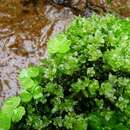en
names in breadcrumbs


Ranunculus lapponicus, the Lapland buttercup,[1] is distributed all over the arctic, with the exception of northern and eastern Greenland.
It is a low, prostrate plant with a creeping, underground stem (rhizome) which sends out long stalks and shoots bearing the flowers. The leaves are deeply tripartite, forming 3 lobes which are toothed or crenated. The flowers are yellow, solitary, generally having 6 (8) petals that are distinctly longer than the sepals. After flowering, the fruit forms a globular head of carpels held above the creeping plant.
It grows in wet localities, especially in moss carpets along beaches, streams and lakes.
Ranunculus lapponicus, the Lapland buttercup, is distributed all over the arctic, with the exception of northern and eastern Greenland.
It is a low, prostrate plant with a creeping, underground stem (rhizome) which sends out long stalks and shoots bearing the flowers. The leaves are deeply tripartite, forming 3 lobes which are toothed or crenated. The flowers are yellow, solitary, generally having 6 (8) petals that are distinctly longer than the sepals. After flowering, the fruit forms a globular head of carpels held above the creeping plant.
It grows in wet localities, especially in moss carpets along beaches, streams and lakes.